Which Doghouse Is Right For My Dog?

Every dog needs a place of its own to call home. For some, that might mean a large wooden structure in your backyard, and for others, it might mean a smaller plastic house that's more portable. But how do you know which type of house is right for your dog?
CHOOSING THE RIGHT DOGHOUSE: THINGS TO CONSIDER
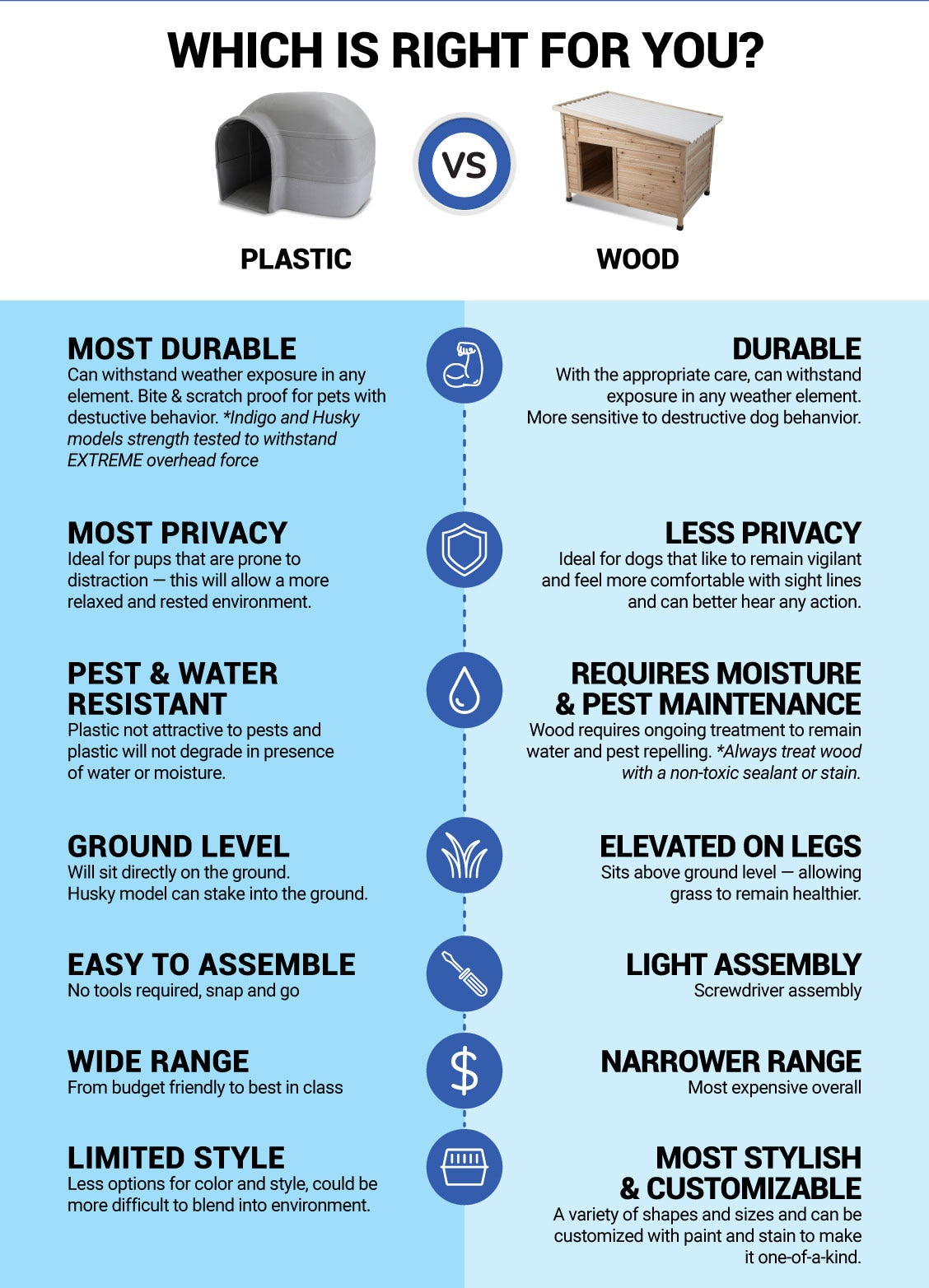
When you're searching for the right house for your dog, you might be overwhelmed by the number of options that are available. A few of the biggest things to consider when looking for the perfect doghouse are size and material.
IS BIGGER ALWAYS BETTER?
While you might assume that a bigger doghouse is better than a smaller one, that isn't necessarily true. Too much space won't provide warmth during the colder months, so if you live in a climate that experiences chillier weather, you may want to look at smaller doghouse options. One measuring guide to follow is that the top of the house's roof should be at least 25% taller than your dog but no more than 50% taller. This should allow plenty of space without too much extra room that could compromise the insulation.
Your dog will enter his house head first, turn around, and then lie down facing the door. He will need enough space to do this, but he doesn't need much more room than that. A good measuring guide for this is that the doghouse door should be 75% of your dog's shoulder to ground height. Why this measurement? Dogs do not need a door that is as tall as they are to enter. Your dog will lower his head to get into a kennel or crate, so they are used to entering doors this way. Also, a smaller door means that less outside air will get in, helping to keep the doghouse at a warmer temperature, especially when it's cold outside.
WHAT MATERIAL IS BEST?
Doghouses are usually constructed of either wood or plastic. If you're having a hard time deciding which is the better option to go with, here are some of the pros and cons of each:
WOODEN DOG HOUSES
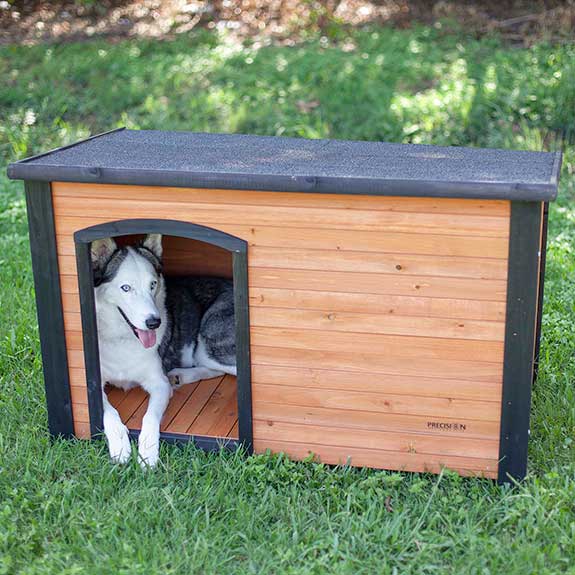
Wood has been a popular choice of material for doghouses for many years and is probably the most common material that doghouses are constructed with.
Pros:
- Wood is very durable and will hold up to scratches and bumps.
- Wood is easy to repair and does not have sharp edges, so you don't have to worry about your dog getting scratches from their new home.
- Wooden doghouses are also easier on the eye and can even add to the design of a backyard.
- Most wooden doghouses have "feet" and stand a few inches off the ground, keeping water and dirt from entering,
- Finally, because wood is a natural insulator, wood doghouses will do a good job of keeping your dog warm in cooler temps.
Cons:
- Over time, wood can rot and splinter which is something you will need to keep an eye on.
- Some wood is treated with harsh chemicals that can be toxic to dogs, so be sure to do a little research so that you don't purchase anything that could be harmful to your dog.
- Lastly, wooden dog houses require assembly, which means you'll need to take time out of your day to assemble the doghouse before your dog can use it.
Shapes: Wooden dog houses also come in a variety of shapes. The most common is the slanted/sloped roof and the gable roof. A slanted or sloped roof is often hinged and can open at the top. This is ideal for pets who may need a bit of extra care or attention while they are in their house as it allows pet parents easier access to the inside. It also makes them easier to clean. A gable roof is more of the "classic" doghouse shape and is best for larger dogs or in areas that experience a lot of rain or snow, so that rain and snow won't gather and get stuck on the top.
PLASTIC DOG HOUSES
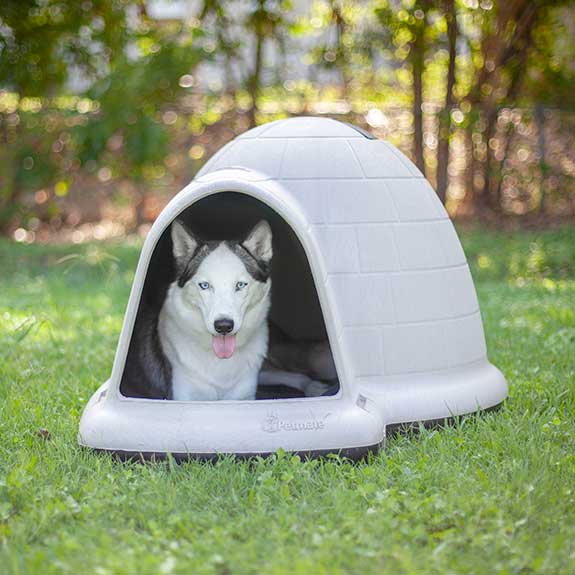
Plastic doghouses have grown in popularity over the years, mostly due to the fact that they last so long and are easy to move around when needed.
Pros:
- Because plastic is lighter than wood, plastic dog houses are more portable and easier to move around when needed.
- Plastic is easier to clean than wood.
- Plastic dog houses usually require little to no assembly.
- If you live in an area that experiences severe thunderstorms or strong winds, heavy-duty plastic doghouses like the Petmate Indigo or Petmate Dogloo are designed to stand up against harsh weather elements like rain, wind, and even tornados.
Cons:
- Plastic does not offer the best insulation for cold temps, however, in the summer they do keep pets cooler
- Plastic doghouses usually come in one general shape
- Plastic can warp and crack over time.
Shapes: Most plastic doghouses come in one general shape. The igloo shape. As the name implies, this type of house is shaped like an igloo and has widely become popular due to the fact that they last so long and come mostly assembled. The igloo shape also makes these doghouses sturdier than wooden dog houses and provides decent temperature control, both during the winter and summer.
HOW TO MAKE YOUR DOG'S HOUSE MORE COMFORTABLE
After you've chosen the perfect dwelling place for your dog, don't forget to keep these things in mind to help them stay comfortable!
- Add padding of some sort, whether it's with blankets, pillows, a bed, or a nylon pad that's designed to fit in your dog's house.
- Put a food and water bowl nearby so that your dog has easy access to a snack and drink when they get hungry or thirsty.
- Last but not least, adding some of your dog's favorite toys is a great way to make sure they feel comfortable and at ease in their new dog house!
CONCLUSION
Just like humans, dogs need a place to retreat to when they're stressed, over-excited, or just need to cool off. Giving your dog a shelter in the backyard is a great way to give your dog its own space. While wooden doghouses are easier on the eye, plastic doghouses hold up better to harsh weather elements. Remember, you know your dog best, so be sure to choose what you know will work best for your specific dog.
Previous article
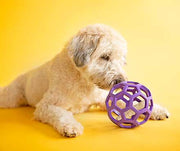
Next article
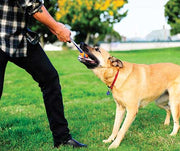
Related posts
View all-

Keep Your Pets Safe During the Holidays
The holiday season brings joy, festivities, and a break from the usual routine. While you're enjoying the celebrations, it's important to remember that the holidays can present unique challenges for our furry family members. The new sights, sounds, and people can be overwhelming, and common festive items can pose unexpected risks.
Read Article -

Holiday Gifts for Every Pet Personality: The Ultimate Guide
The holiday season is finally here, and for many of us, that means finding the perfect presents for the ones we love most—our pets. Whether they are a steadfast dog who never leaves your side or an independent cat who graces you with their presence on their own terms, our pets are cherished members of the family. They deserve to celebrate right alongside us, stocking stuffers and all.
Read Article -

How to Keep Your Pet Calm During Thanksgiving
Thanksgiving is a time for family, friends, and food, but for our pets, the holiday can be overwhelming. The sudden change in routine, unfamiliar faces and scents, and increased noise can trigger significant stress. Understanding why your pet might feel anxious is the first step toward creating a peaceful holiday experience for everyone, including your furry family members. This guide offers calming tips for pets and practical solutions to ensure your dog or cat feels safe and secure during the festivities.
Read Article



